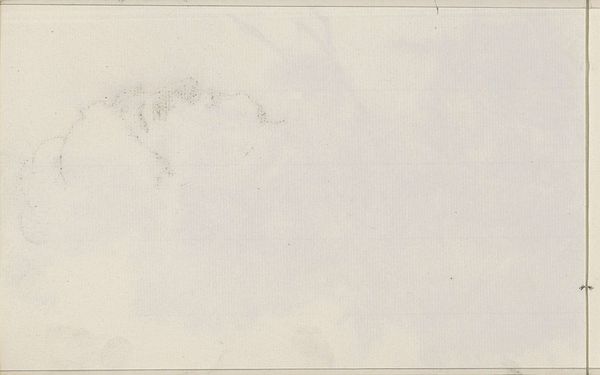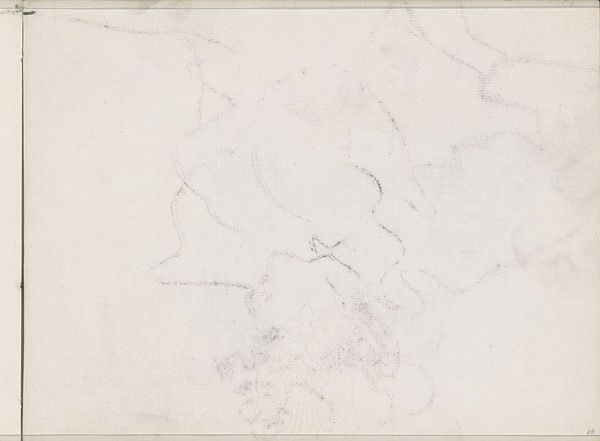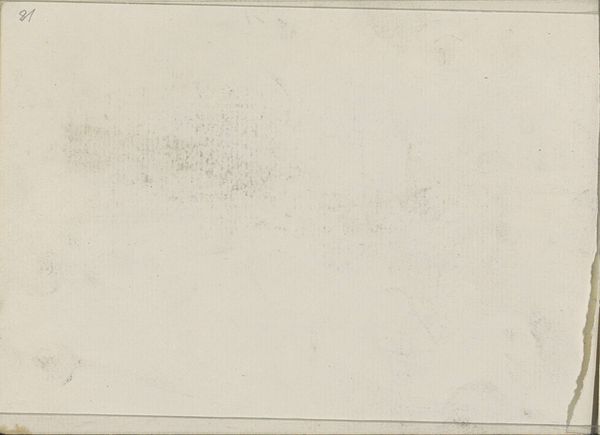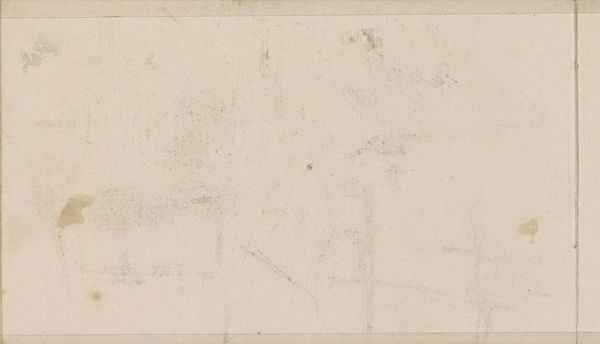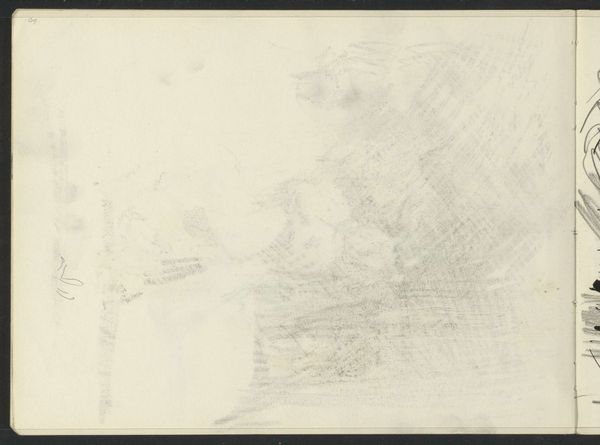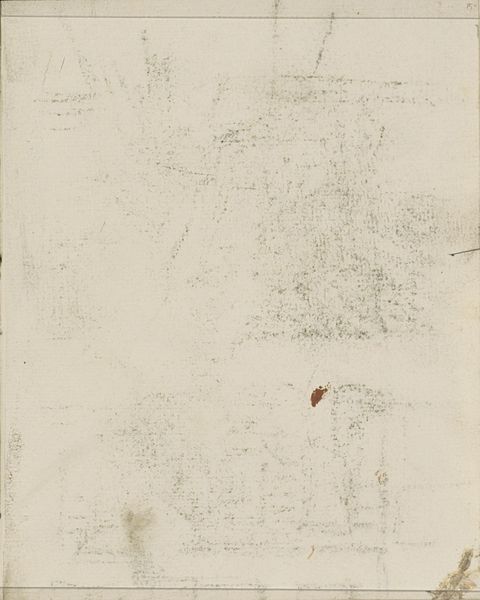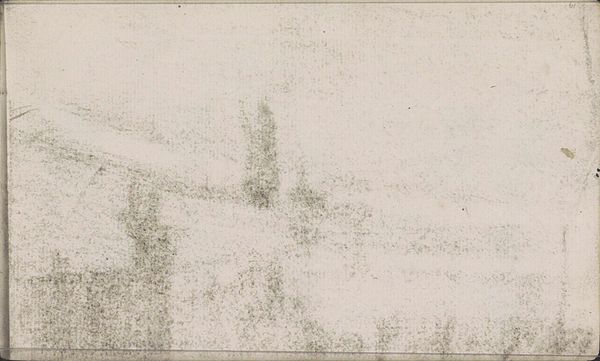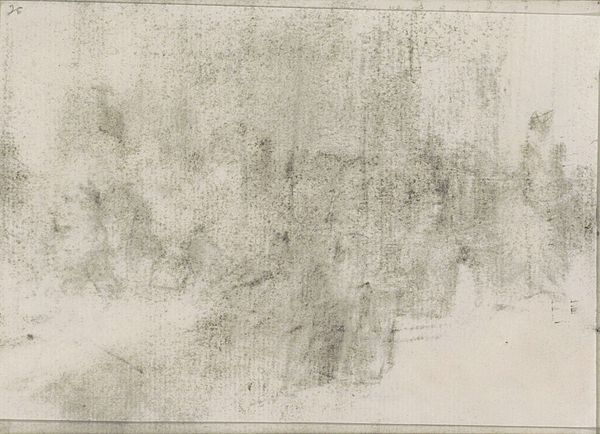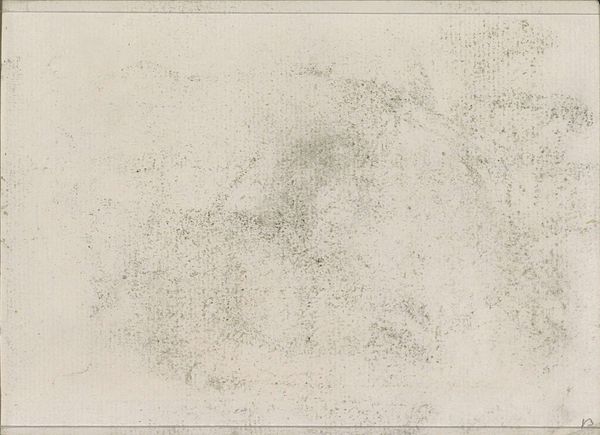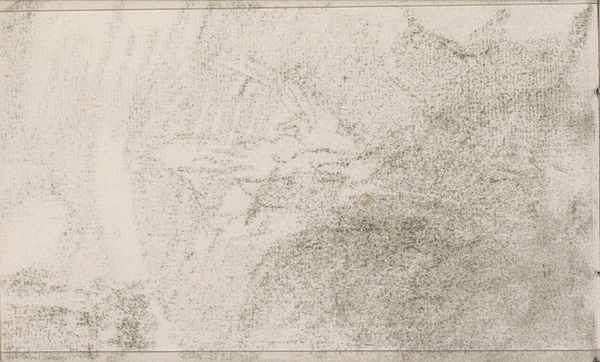
Copyright: Rijks Museum: Open Domain
Editor: Here we have "Abklatsch van de krijttekening op blad 4 recto" – which translates to something like "rubbing of a chalk drawing on page 4 recto" – a pencil and paper piece done sometime between 1875 and 1934 by Isaac Israels. The faded quality of the lines almost makes it look like a ghost image. What do you make of this ghostly impression? Curator: It whispers of a moment captured and then almost lost, doesn’t it? I find myself thinking about memory itself, how impressions fade, how details blur with time. Israels clearly wasn't aiming for photorealism here, was he? He was chasing something more elusive – a fleeting gesture, a sense of light. Or perhaps the *idea* of a drawing rather than the thing itself. It is intriguing how faint marks suggest shapes, forms but then disappear! Does that make it less of a "complete" work somehow? What does complete even *mean*, anyway? Editor: That’s a good point. Maybe the incompleteness is the point? What are the shapes or forms that you can make out? Curator: Well, look closely – almost squint – and you might see suggestions of figures, perhaps a room. It’s less about definition and more about suggestion. Think about music, a melody hinted at but never fully resolved. What mood does it evoke for you? Editor: It does feel unresolved. A little sad, perhaps, but also…intriguing. Like finding a fragment of something important. Maybe like overhearing a conversation, with parts missing. Curator: Exactly! And perhaps that’s the allure. It invites us to complete the story, to fill in the gaps with our own imagination. Art becomes a collaboration, doesn't it? And what do we make of its state now, worn out by the passing of time? That makes the images on its surfaces more moving... Editor: I hadn't thought of it that way before. I appreciate it much more.
Comments
No comments
Be the first to comment and join the conversation on the ultimate creative platform.
